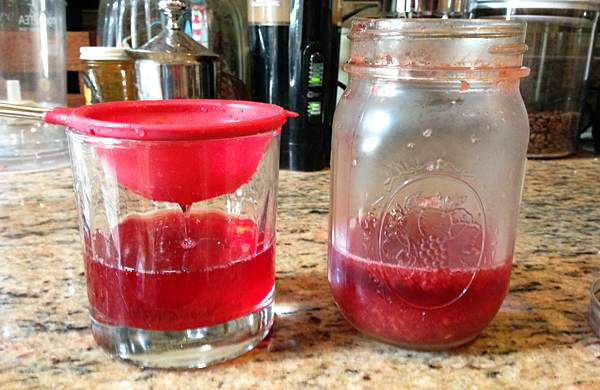It’s not too often I go into full baking mode. Usually for me, baking means something quick, easy, and with enough healthy substitutions that it barely slides as a dessert. There are a few times a year I go all-in, break out elaborate recipes, and cut no corners. Making this Summer Berry Pavlova was one of those times.

A meringue dessert, pavlova is naturally gluten-free and easy to adapt to be dairy-free. Even better, it’s a recipe where no one will mind, or even notice. Honestly, it’s that good. The pavlova I made disappeared in just a few minutes. While it’s not too difficult to make, it is a little time consuming. However, with fresh summer berries at their peak, you have enough of a reason to go ahead and whip up this treat.
Summer Berry Pavlova (Gluten-Free, Dairy-Free)
adapted from Epicurious.
Makes 8 servings
Ingredients
For Meringue:
• Earth Balance or other non-dairy shortening (for greasing pan)
• Powdered sugar (for dusting pan)
• 1 cup white sugar
• 1/2 cup light brown sugar, packed
• 1 1/2 tbsp corn starch
• 1 1/2 tbsp vanilla extract
• 2 tsp white vinegar
• 6 egg whites
For Berries:
• 1 1/2 pounds of mixed berries (strawberries, blackberries, raspberries, blueberries)
• 2 tbsp granulated sugar
For Cream:
• 1 can of regular coconut milk (refrigerated overnight)
• 1 tsp vanilla extract
Equipment
• 3 8-inch cake pans
• parchment paper
1. Preheat oven to 275º F. Grease the pans with shortening and dust with powdered sugar. Shake off any excess. Line the bottom of each pan with a round of parchment paper.
2. Mix white sugar, brown sugar, and cornstarch in a medium bowl until well-incorporated. Set aside.
3. In a small bowl, stir together vanilla and vinegar. Set aside.
4. In a large bowl, beat egg whites using an electric mixer at medium speed until they hold soft peaks, about 5 minutes.
5. Increase the speed to medium-high and add the sugar mixture one tablespoon at a time. Once all the sugar mixture has been added, continue to beat for one minute.
6. Add the vinegar mixture and beat at high speed until the meringue holds stiff peaks, about 5 minutes.
7. Distribute the meringue evenly into the three pans, smoothing out the tops with a spatula. Bake in the oven for 1 hour, or until they form a crisp and dry crust on top.
8. Once finished baking, turn off the oven and prop open the door slightly using a wooden spoon. Leave the meringues inside the oven to cool for 1 hour.
9. Once cool, remove the meringues from the oven and use a knife to loosen from the sides of the cake pans. Carefully turn meringues over onto a plate and out of the pans. Peel off the parchment paper, and then flip back right side up.

Prepare berries:
1. Wash berries and combine in large bowl (quarter and remove stems if using strawberries). Toss with sugar and let sit at room temperature for up to 1 hour.
Prepare cream:
1. Turn the coconut milk can upside down and open. Pour off all the coconut water sitting on top, and reserve for another use (smoothies!).
2. Scoop out the thick coconut cream left in the can into a large bowl. Add vanilla extract.
3. Beat coconut cream on high using an electric beater until it becomes light and airy, resembling whipped cream, 3-5 minutes.
Assemble dessert:
1. To assemble the pavlova, stack meringue on a serving plate, followed by one third of the whipped cream and topped with one third of the berries. Repeat with two remaining layers of meringue, cream, and fruit.
Eat immediately after assembling, and don’t count on leftovers.



 Fresh bottled booch
Fresh bottled booch
 My odd-looking current SCOBY, a smaller mature one with a larger young one attached
My odd-looking current SCOBY, a smaller mature one with a larger young one attached






 Go ahead, “taste the difference.”
Go ahead, “taste the difference.”